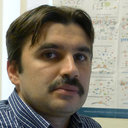Integrative analysis of neuroblastoma and pheochromocytoma genomics data.
الكلمات الدالة
نبذة مختصرة
BACKGROUND
Pheochromocytoma and neuroblastoma are the most common neural crest-derived tumors in adults and children, respectively. We have performed a large-scale in silico analysis of altogether 1784 neuroblastoma and 531 pheochromocytoma samples to establish similarities and differences using analysis of mRNA and microRNA expression, chromosome aberrations and a novel bioinformatics analysis based on cooperative game theory.
METHODS
Datasets obtained from Gene Expression Omnibus and ArrayExpress have been subjected to a complex bioinformatics analysis using GeneSpring, Gene Set Enrichment Analysis, Ingenuity Pathway Analysis and own software.
RESULTS
Comparison of neuroblastoma and pheochromocytoma with other tumors revealed the overexpression of genes involved in development of noradrenergic cells. Among these, the significance of paired-like homeobox 2b in pheochromocytoma has not been reported previously. The analysis of similar expression patterns in neuroblastoma and pheochromocytoma revealed the same anti-apoptotic strategies in these tumors. Cancer regulation by stathmin turned out to be the major difference between pheochromocytoma and neuroblastoma. Underexpression of genes involved in neuronal cell-cell interactions was observed in unfavorable neuroblastoma. By the comparison of hypoxia- and Ras-associated pheochromocytoma, we have found that enhanced insulin like growth factor 1 signaling may be responsible for the activation of Src homology 2 domain containing transforming protein 1, the main co-factor of RET. Hypoxia induced factor 1α and vascular endothelial growth factor signaling included the most prominent gene expression changes between von Hippel-Lindau- and multiple endocrine neoplasia type 2A-associated pheochromocytoma.
CONCLUSIONS
These pathways include previously undescribed pathomechanisms of neuroblastoma and pheochromocytoma and associated gene products may serve as diagnostic markers and therapeutic targets.


